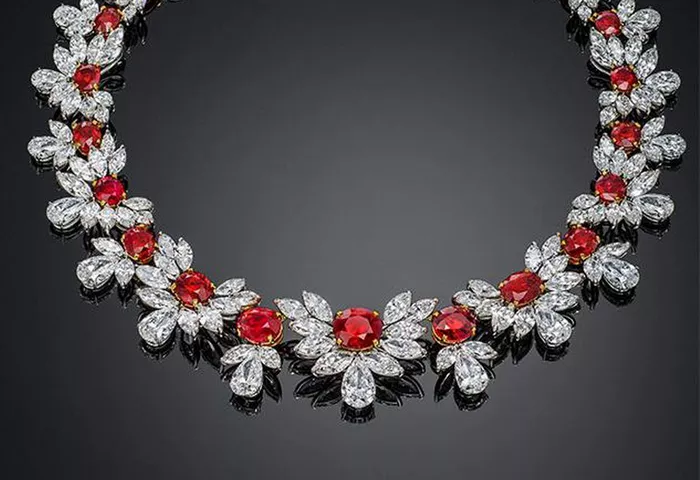Washington, D.C., has long been renowned for its extravagant social gatherings, but none could compare to the opulent parties hosted by Evalyn Walsh McLean, a prominent socialite of the early 20th century. At McLean’s soirées, the guest list read like a who’s who of the world’s elite, with ambassadors, dignitaries, politicians, and world leaders gracing her events. The pièce de résistance of these gatherings was the presence of the famed Hope Diamond, a 45.52-carat sapphire-blue wonder known worldwide. McLean, who was both rich and fortunate, embraced the gem’s alleged curse with nonchalance.
In 1908, Evalyn Walsh McLean married Edward Beale McLean, also a person of considerable wealth. Just three years later, the couple made headlines by acquiring the Hope Diamond, originally cut from the “French Blue” diamond associated with Louis XIV, for a staggering sum of $180,000, which would be equivalent to approximately $5.8 million in today’s currency. Following McLean’s passing, the Hope Diamond, along with its accompanying 46-diamond necklace chain, found its way into the hands of the renowned jeweler Harry Winston. In 1958, after a national tour as part of Winston’s exhibition titled “The Court of Jewels,” the resplendent blue diamond began its permanent residence at the Smithsonian Institution, arriving via ordinary U.S. mail. Remarkably, even the original mailing box has been preserved by the Smithsonian.
Today, the Hope Diamond enjoys a place of honor within the hallowed halls of the Smithsonian’s National Museum of Natural History. The gem is securely safeguarded, with armed guards stationed at its chamber’s entrance. Inside, the diamond is enshrined within an impenetrable vault disguised as a glass case. Each evening, as visitors depart, the precious gem is meticulously lowered into the pedestal of its case, ensuring its safekeeping.
Jeffrey Post, the museum’s recently retired gemstones curator, dedicated nearly four decades of his career to unraveling the secrets of the Hope Diamond. His impressive body of work includes numerous publications delving into this particular fascination. Post’s research retraces the diamond’s journey, starting from its origin in India and its eventual acquisition by Louis XIV, who ordered the transformation of the stone into the “French Blue.” It subsequently underwent further modifications, culminating in its modern iteration as a pendant on a necklace designed by Pierre Cartier in the 20th century.
Throughout history, the Hope Diamond experienced a series of dramatic thefts, disappearances, and rediscoveries. With each appearance, the gem underwent alterations, either for aesthetic reasons or, in one instance, to conceal a crime. Thanks to the ongoing scholarly efforts of Post and his colleagues, much of the diamond’s mysterious journey, its transformative cuts, and its various owners have been meticulously documented.
Post’s research unveiled that the Hope Diamond is not just a beautiful bauble; its stunning azure hue, resembling the deep sea’s color, is an exceedingly rare occurrence, found in only a fraction of diamonds. “Its creation, as far as we know, is a completely unique event in the history of the earth,” noted Post in 2010 while studying the diamond’s distinctive coloration. He discovered that the gem’s unique blue hue resulted from varying concentrations of boron, ranging from zero to eight parts per million, giving the Hope Diamond its mosaic of blues. Moreover, under ultraviolet light, the diamond exhibits phosphorescence, emitting an orange glow for about a minute. This feature serves as a formidable deterrent to would-be thieves, as a spectrometer can capture the gem’s distinct “fingerprint,” which differs from one diamond to another.
In 2014, Post, in collaboration with François Farges, a mineralogist at the French National Museum of Natural History in Paris, used computer simulation to reimagine the Hope Diamond’s appearance during Louis XIV’s reign, an era characterized by the grandeur of the Sun King. Their meticulous analysis, driven by Farges’ serendipitous discovery of a lead specimen in the Paris museum’s collections, shed light on the king’s peculiar display of the diamond. This lead specimen, upon examination, turned out to be an exact replica—a cast created from a mold of the lost French Blue diamond.
Utilizing digital 3D measurements, Post and Farges reenacted the transformation. The result revealed that when the French Blue was positioned against a golden metal backing, a magnificent gold sun shone brilliantly from the center of the blue stone’s unique window. “Louis XIV was the ‘Sun King,’ and so this would have been an emblem representing his power,” explained Post. “His colors were blue and gold, and so to have a blue diamond with a gold sun in the center—that’d be something that no one else has, something that would almost seem divine.”
It’s a fascinating revelation, considering that Evalyn Walsh McLean, who owned the Hope Diamond from 1911 to 1947, whimsically adorned her dog with this splendid gemstone, unaware of the diamond’s royal history and the divine symbolism it once carried.


